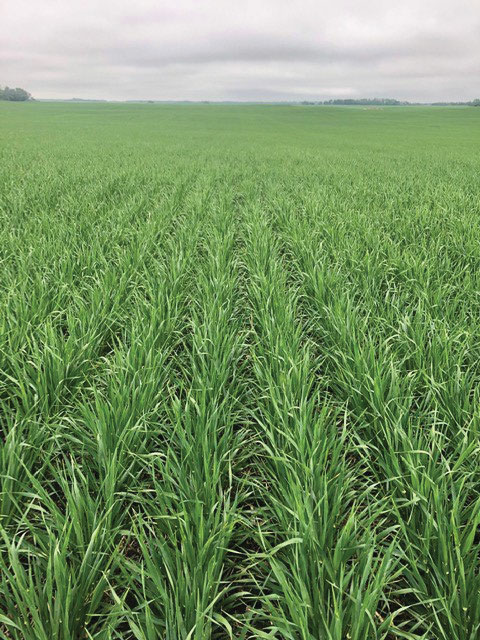MIDGE SNIFFERS PUT WHEAT TO THE SMELL TEST
BY TREVOR BACQUE • PHOTO COURTESY OF SHELLEY BARKLEY
Does it pass the smell test? In an effort to protect wheat from one of its most virulent pests, researchers are gauging the reactions of the tiny insect to the scent of thousands of varieties.
The hallowed Sm1 gene continues to be the default defender in the fight against wheat midge larvae that feed upon the cereal. There is collective concern the gene alone may not forever stop the midge. What if Sm1 resistance breaks down or midge larvae simply develop resistance to it? For many years the answer was chlorpyrifos, an insecticide now banned by the federal government. Few effective insecticides remain commercially available. A small parasitic wasp is the lone natural predator that can effectively combat the midge, however, under outbreak conditions there are simply not enough wasps to control the spread.
The situation stinks, and that’s exactly what Boyd Mori is counting on. An assistant professor in agricultural and ecological entomology at the University of Alberta, Mori has picked up on a recently concluded research project that attempts to identify smellier wheat lines that produce volatile organic compounds to deter female midges from laying eggs. It’s officially known as oviposition deterrence.
“We hope to be able to identify molecular markers that plant breeders can use to breed and cross lines with the oviposition deterrent compounds with more commercially available lines or more commercial quality lines,” said Mori.
Over the next two years, Mori will collaborate with colleagues Alejandro Costamagna, James Harynuk and Curt McCartney at the University of Manitoba and U of A to screen more than 4,000 samples. While it’s a massive amount of tedious work, the results could produce the fragrant aroma of victory for research scientists.
“If we can identify the genes, that will really help the breeders in their work to get it further ahead and closer to commercialization,” he said.
The method used to test the midge’s reaction to the smell of various wheat varieties is as impressive as it is complicated. With the use of a gas chromatography electro-antennal graphic detector, scientists essentially put midges in a focus group, exposing them to various odours, and make note of how they react via their antennae, the appendage with which they sense smells. The scientists determine whether the odours attract or repel the midge. Repellant odours will become the focus of further study.
“Basically, we’re measuring a nerve impulse in the antennae,” said Mori. “And that will help us determine what compounds the midge antennae are reacting to in all of these different lines.”
Determining the difference between wheat lines with and without oviposition deterrence will be valuable information in the creation of these compounds. In the long term, he and his colleagues are optimistic the yet-to-be-identified stink genes may become a stackable gene trait along with Sm1 to keep wheat lines resistant to midge.
“Hopefully, by the time this project is over we can say, ‘OK, here are the molecular markers that helped to identify this trait in this wheat line.’ And now, the breeders … can then use those to do their breeding.”
The project’s $1.2 million in funding is supplied by Results Driven Agricultural Research and Genome Alberta.







Comments